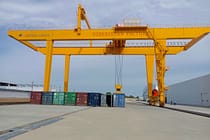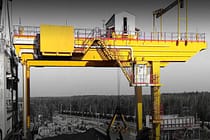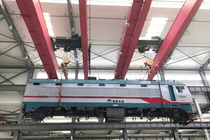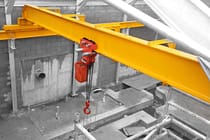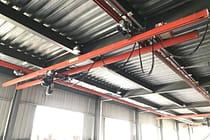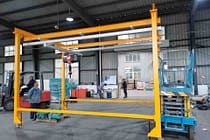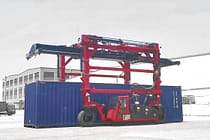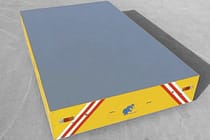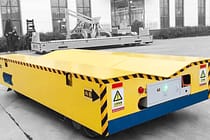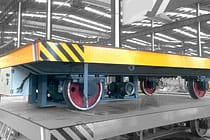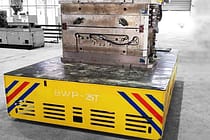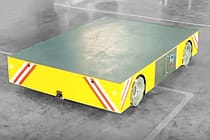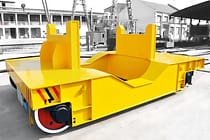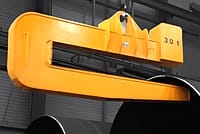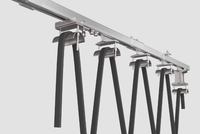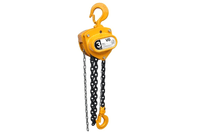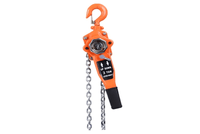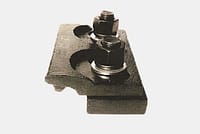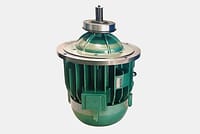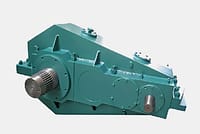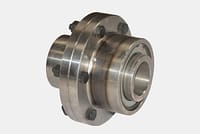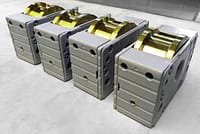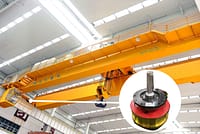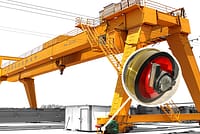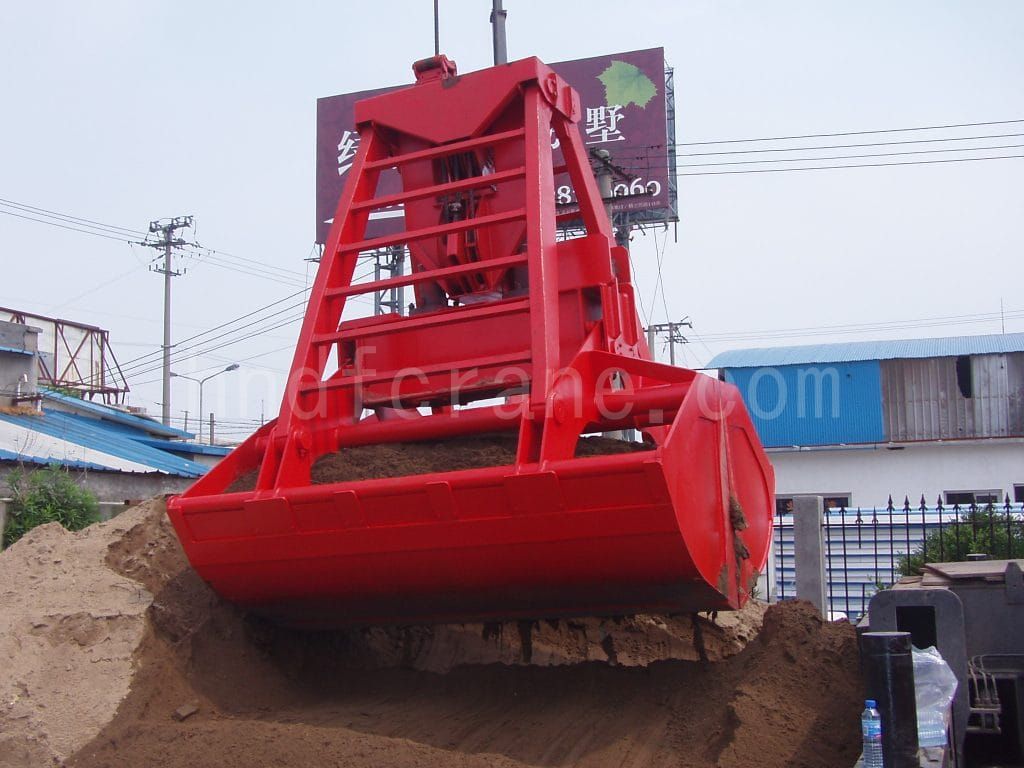Product Introduction
- Remote control clamshell grabs are novel single-cable bulk cargo grabs that do not require external energy, are automatically closed by the lifting of the crane hook on the material pile, and can be opened by remote control at any position in the air.
- Remote control clamshell grabs are equipped with a hydraulic system, long-distance wireless remote control can be realized.
- The modular design of wireless remote control clamshell grabs parts is easy to maintain and repair, and it is more suitable for long-distance navigation.
- The remote control clamshell grabs system are completely waterproof and designed to prevent waves and rain effectively. Each grab has undergone a strict 24-hour underwater soaking test.
- The remote control clamshell grabs use of multi-stage buffer opening not only reduces the impact on the crane and the grab itself, but also ensures that the grab can be quickly unloaded.
- The failure rate of the remote control clamshell grabs is low, which can ensure continuous work for 24 hours; the grab consumes less power when it is opened, and it can be used for more than 180 hours on a single charge.
- Remote control clamshell grabs are simple to use. The crane does not need to be equipped with other auxiliary devices. It can be used by hanging the grab on a hook or container spreader.
- At present, remote control clamshell grabs are widely used in bulk carriers, containers, and terminals for dual-use bulk cargo, and exported in bulk.
Technical parameters
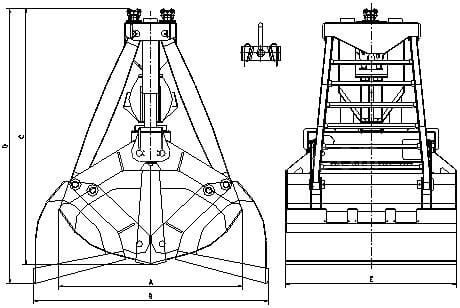
| Model | Volume(m3) | Capacity(t) | Self-esteem(t) | Dimensions(mm) | Pulley diameter(mm) | Wire rope diameter(mm) | ||||
| A | B | C | D | E | ||||||
| YK10[3-6]4.5 | 3-6 | 10 | 4.5 | 2600 | 3338 | 3756 | 4071 | 2700 | ø445 | ø24 |
| YK14[4-7]6 | 4-7 | 14 | 6 | 2780 | 3398 | 4092 | 4448 | 2800 | ø520 | ø28 |
| YK16[4-8]7 | 4-8 | 16 | 7 | 2780 | 3398 | 4092 | 4448 | 3000 | ø520 | ø28 |
| YK20[5-10]8 | 5-10 | 20 | 8 | 2810 | 3591 | 4192 | 4513 | 3560 | ø560 | ø32 |
| YK25[6-12]10 | 6-12 | 25 | 10 | 3000 | 3837 | 4487 | 4850 | 4100 | ø650 | ø36 |
| YK28[8-16]10.5 | 8-16 | 28 | 10.5 | 3060 | 3887 | 4559 | 4881 | 4320 | ø650 | ø36 |
| YK32[10-20]13 | 10-20 | 35 | 14 | 3270 | 4109 | 5008 | 5391 | 4600 | ø720 | ø40 |
| YK40[12-24]16 | 12-24 | 40 | 17 | 3520 | 4374 | 5136 | 5495 | 4700 | ø800 | ø45 |
| YK50[15-30]21 | 15-30 | 50 | 21 | 4000 | 4873 | 5850 | 6072 | 4900 | ø880 | ø52 |
Case
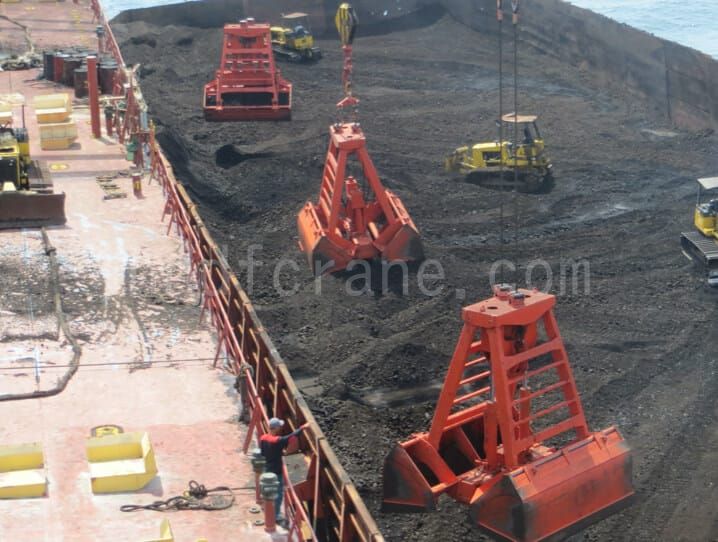
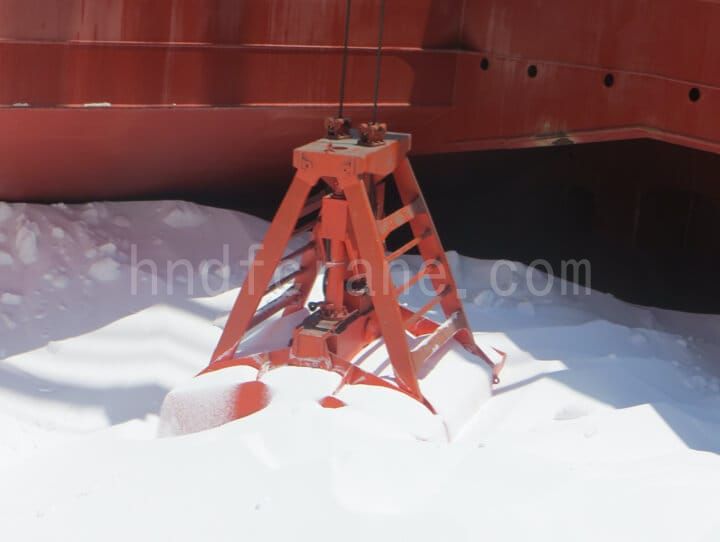

How to choose the right grab
- Clarify your purpose:
Before delving into the options, please clarify your specific requirements.Ask yourself:
- What materials do you want to deal with?(Logs, scrap metal, stone, etc.)
- What tasks will the grab perform?(Loading, sorting, dismantling, etc.)
- What type of device will it be connected to?(Gantry crane, overhead crane)
- What is the specific gravity of the material you grab?The number of cubes of the grab?
What is the tonnage of your crane equipped with a grab?
According to the characteristics of the material being grabbed, the grab is usually divided into four basic types: light, medium, heavy and super heavy.
| The type of material to grab | Grab material | Capacity weight(t/m³) |
| Light | Coke, slag, grains, potatoes, medium-quality anthracite lime, cement, soil, gravel, clay, broken bricks, etc. | 0.5~1.2 |
| Medium | Peat, large pieces of anthracite coal, compacted coal, clay, limestone, gravel, salt, gravel, bricks, bauxite, flakes of iron oxide, cement, sand and bricks in water, etc. | 1.2~2.0 |
| Heavy | Limestone, heavy clay, small and medium-sized ores, hard rock, rod-shaped iron oxide, iron ore, lead concentrate powder, etc. | 2.0~2.6 |
| Overweight | Large ores, large manganese ore, sedimentary agglomerated lead ore powder, etc. | 2.6~3.3 |
- Accessory compatibility: Ensure that the grab is compatible with existing equipment.
- Budget considerations: The price range of the grab is different.Balance your budget based on the function and durability of the grab.
- Comments and suggestions: Research online, read user reviews, and seek suggestions from industry peers.
- Go to the crane manufacturer for on-site inspection and testing before purchasing: test the grab under real conditions as much as possible.Evaluate its performance, ease of use, and overall functionality.
Keep in mind that choosing the right grab requires a balance between functionality, safety, and cost.By considering these factors,








